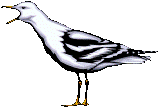Eastern Wildlife Damage Control Conferences
Date of this Version
September 1985
Document Type
Article
Abstract
As defined by state statue, the Division of Fish and Wildlife is responsible for the protection, reproduction, care, management, survival, and regulation of all wildlife populations. By law, the Division must take a leading role in solving wildlife damage problems when they occur. In Indiana, wildlife damage or nuisance animal problems takes two forms: damage from individual birds or mammals that are in the wrong place at the wrong time (such as raccoons nesting in an attic) and damage from bird or mammal populations that have grown large enough to cause serious economic losses for agricultural, forestry, or other land use interests (such as deer depredation on row crops). Biologists of the Division have recognized basically three levels of wildlife damage or nuisance problems: 1) An example of the first level would involve a bird or mammal taking up residence in a man-made structure where, routinely, there is little or no damage. Birds or mammals at this level are classed as being simply nuisance animals. 2) The second level would involve animals that are actually causing damage. Examples would include minor beaver dam flooding, individual animals consuming garden crops or ornamental trees, muskrat damage to pond banks or dams, and damage to attics or basements from squirrels or raccoons. 3) The third level of damage is the most serious from an economic point of view. In Indiana, examples include coyote depredation of livestock, deer damage on or chards and row crops, and large concentrations of geese in urban areas.


